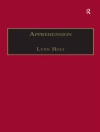Scholars have debated the demographic consequences for the indigenous populations of the Americas of 1492, the beginning of sustained contact between the Old and New Worlds. Some have hypothesized an initial die-off of indigenous population resulting from the introduction of highly contagious crowd diseases such as smallpox and measles. So-called "virgin soil" epidemics caused catastrophic mortality that culled the indigenous populations, and some scholars such as the late Henry Dobyns hypothesized a rate of decline of around 90 percent as epidemics spread across the Americas like a miasmic cloud. However, over the course of generations, the indigenous populations developed immunities to the maladies, and recovered.This book presents a detailed case study of indigenous populations congregated on Jesuit missions in lowland South America that challenges the basic assumptions of the model of "virgin soil" epidemics. It shows that epidemic mortality varied between communities, and that catastrophic mortality occurred on some mission communities generations after first sustained contact. It concludes that patterns of demographic change among indigenous populations were far more complex than is often assumed. This study is of interest to specialists in historical demography, colonial Spanish America, Native American history, and the history of Spanish frontier missions.
Robert H. Jackson
Population History of the Missions of the Jesuit Province of Paraquaria [PDF ebook]
Population History of the Missions of the Jesuit Province of Paraquaria [PDF ebook]
قم بشراء هذا الكتاب الإلكتروني واحصل على كتاب آخر مجانًا!
شكل PDF ● صفحات 343 ● ISBN 9781527534308 ● الناشر Cambridge Scholars Publishing ● نشرت 2019 ● للتحميل 3 مرات ● دقة EUR ● هوية شخصية 7008571 ● حماية النسخ Adobe DRM
يتطلب قارئ الكتاب الاليكتروني قادرة DRM












